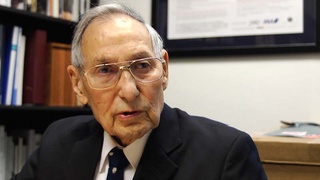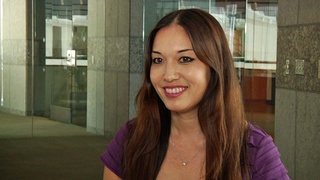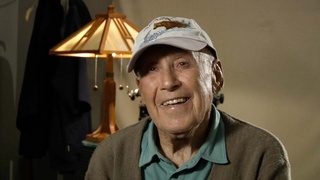Interviews
Different learning style in Japan and the United States
I went to SC (University of South California) evening school to learn English, because I’ve been away for 4, 5 years. In Japan, you never can ask a question. But when I went to SC, the teachers say, “Any questions? Any questions?” and I had so many questions that I could ask. I thought, “Oh this is America”. I was so happy that I could ask questions and be close to the teacher.
But in Japan, it’s different. Very different. You have to learn by watching and they said…it’s bad, but they said, “You have to toru”. “Toru” means “steal,” you know, toru. But that’s how you learn. And so the teacher…you do one thing today but the next day, he does different. And you have to know what different he did. And so sometime his make-up is different. So we have to say, “You’re make-up was different” and that’s why we have to write down in the paper what was different from yesterday.
So we have to be very…and then when practicing, we have to know what the other party…7…you have to know what they’re doing over there. You can’t just learn your part. You have to know the whole what’s going on. So I have to know what you’re thinking. I have to know what he’s thinking. I have to know…that’s kokoro no kukan. “Through the air, you have to feel it.” So that’s what I learned so that when I was in the camp, I could pour my feelings to the audience. And then the response that I get I think is just wonderful. That’s what I think I learned in Japan.
Date: November 30, 2004
Location: California, US
Interviewer: Nancy Araki and John Esaki
Contributed by: Watase Media Arts Center, Japanese American National Museum
Explore More Videos


Writing a novel on the 442nd
Jewish Japanese American journalist

Meeting Hamako in Japan
(1916 - 2013) Member of the U.S. Military Intelligence Service

Meeting Mr. Amano
(1916 - 2013) Member of the U.S. Military Intelligence Service

Marriage and Returning to US
(1916 - 2013) Member of the U.S. Military Intelligence Service

Feeling prejudice while looking for jobs
(1919 - 2015) Nisei who served in World War II with the 442nd Regimental Combat Team

Generosity of the Italians
(1919 - 2015) Nisei who served in World War II with the 442nd Regimental Combat Team

Invited to teach at Harvard by his boss
(1919 - 2015) Nisei who served in World War II with the 442nd Regimental Combat Team

The riot in Manzanar
(b. 1921) Nisei veteran who served in the occupation of Japan

The Dopey bank that survived the war
(b. 1934) Award-winning Disney animation artist who was incarcerated at Topaz during WWII

Evacuated to the Jungle
(b. 1938) Philipines-born hikiagesha who later migrated to the United States.

Captured by Guerillas after bombing of Pearl Harbor
(b. 1938) Philipines-born hikiagesha who later migrated to the United States.

Grandfather picked up by US Army
(b. 1952) Former banking executive, born in Hawaii

Father's business partner operated their farming business during WWII
(b. 1935) Sansei businessman.

Father was convinced the constitution would protect him
(b. 1935) Sansei businessman.
